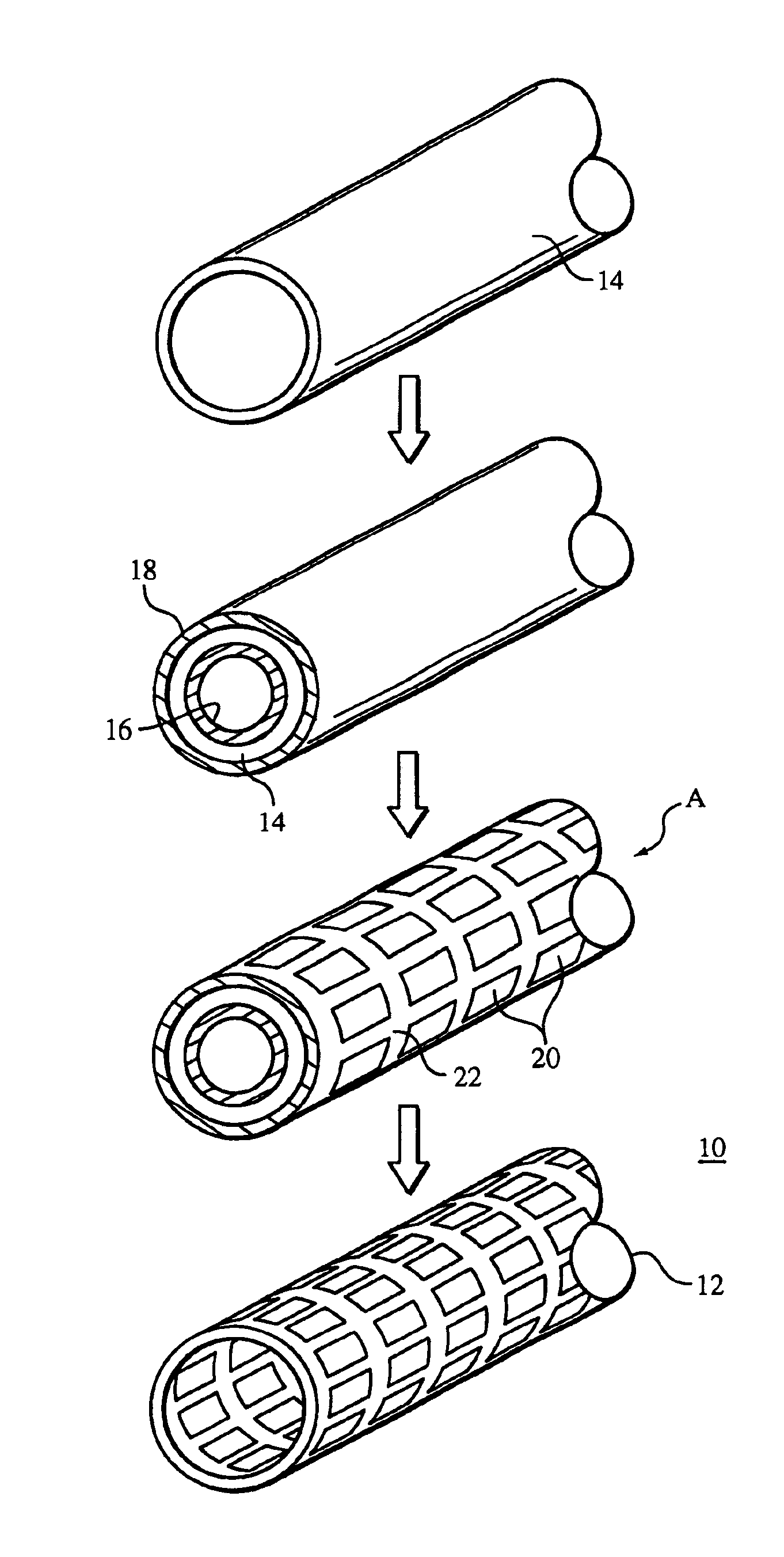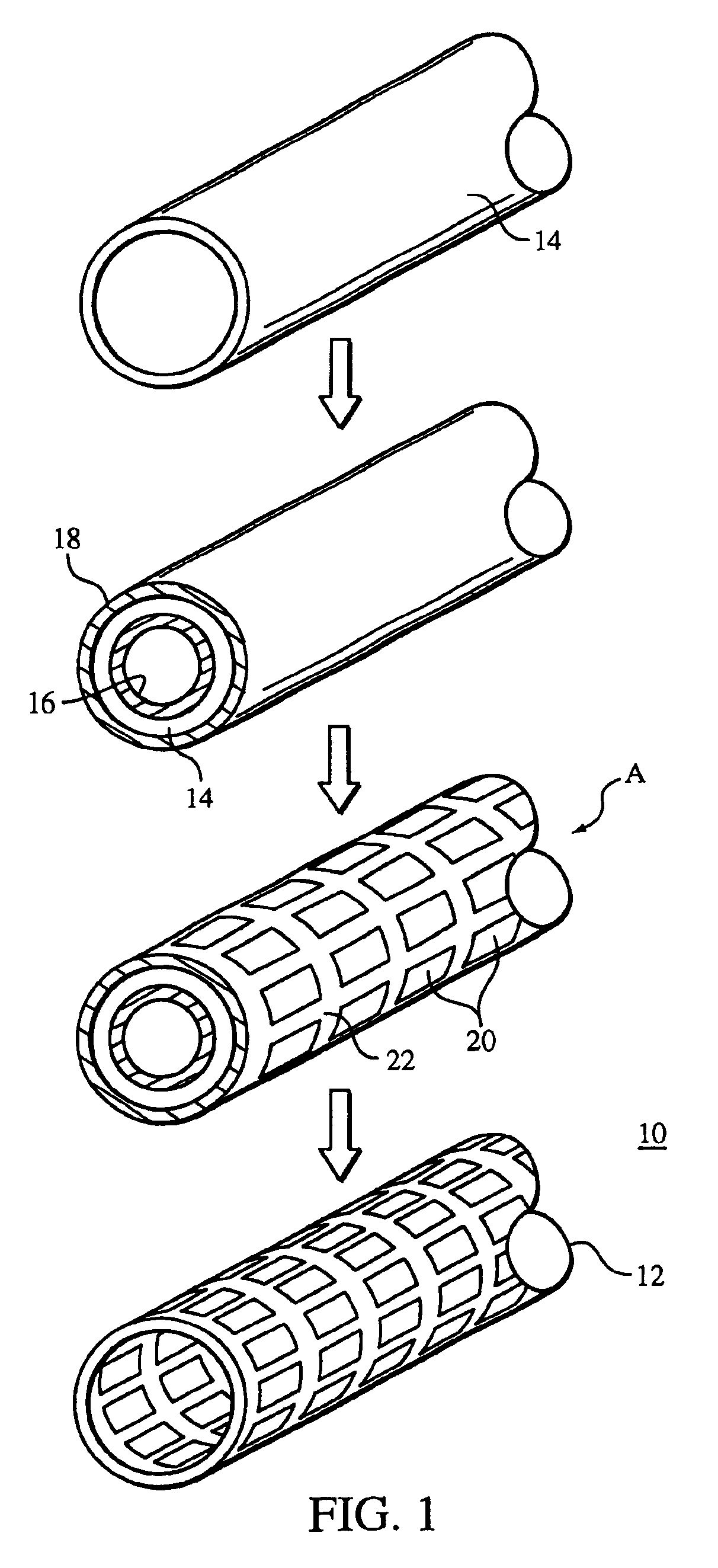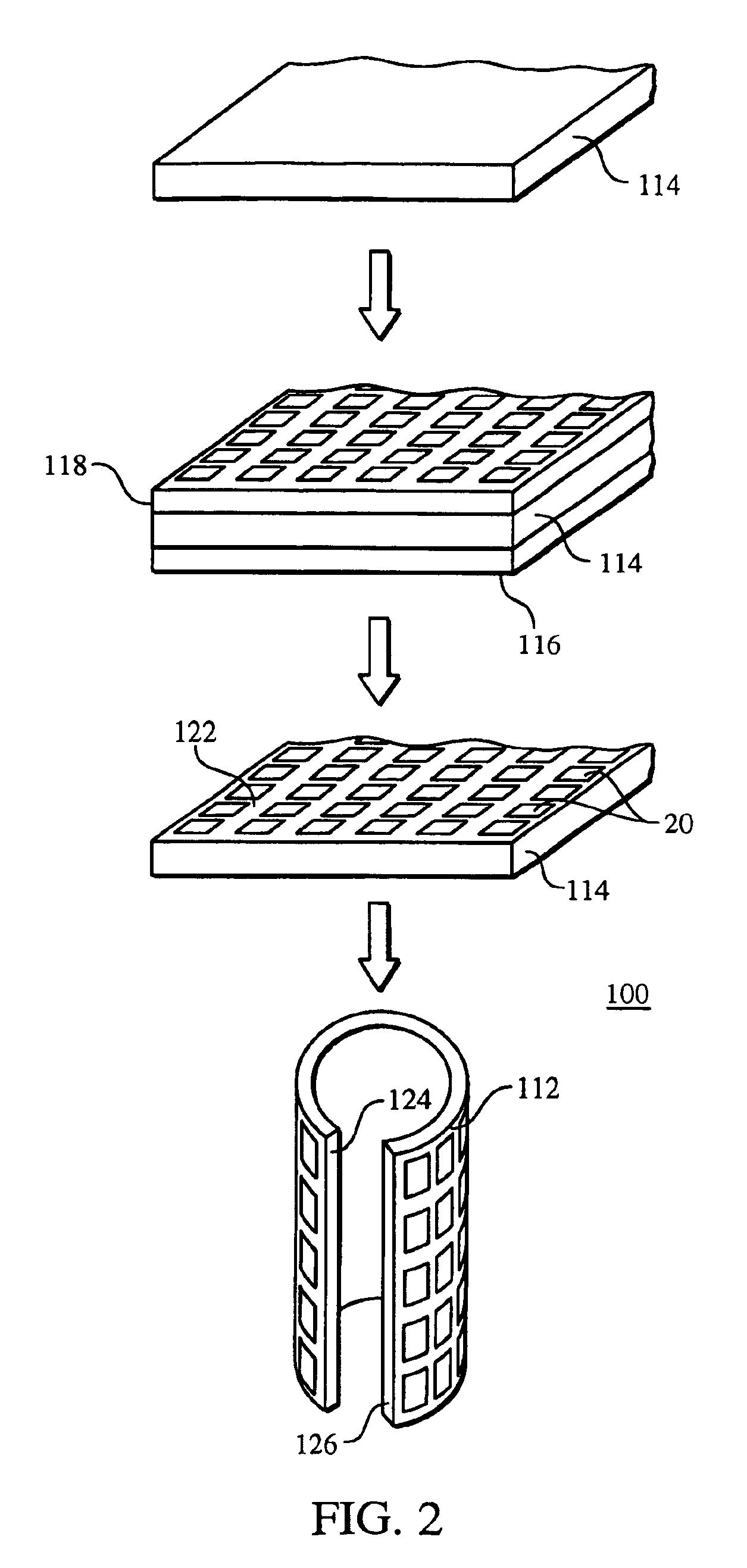Methods of making medical devices
a technology of medical devices and materials, applied in the field of medical devices making, can solve the problems of waste, cost, and stents being more susceptible to failure, and achieve the effects of reducing the amount of stent material
- Summary
- Abstract
- Description
- Claims
- Application Information
AI Technical Summary
Benefits of technology
Problems solved by technology
Method used
Image
Examples
Embodiment Construction
Referring to FIG. 1, a method 10 of making a stent 12 is shown. Method 10 generally includes providing a tubular member 14 that ultimately becomes stent 12, and forming an inner layer 16 and an outer layer 18 on the tubular member. Tubular member 14 is made of a stent material, e.g., platinum, and layers 16 and 18 can be made of, e.g., carbon steel. Portions of tubular member 14 and layers 16 and 18 are then removed, e.g., by laser cutting, to form openings 20 and struts 22 of stent 12. Subsequently, layers 16 and 18 are removed from tubular member 14 to yield stent 12.
Layers 16 and 18 serve as sacrificial layers that are ultimately removed at the end of method 10. Here, rather than starting with an oversized tubular member to compensate for loss of material that may occur during removal of recast material, a relatively smaller tubular member 14 can be used with layers 16 and 18. For example, tubular member 14 and layers 16 and 18 can have a total dimension similar to that of an ove...
PUM
| Property | Measurement | Unit |
|---|---|---|
| thick | aaaaa | aaaaa |
| thick | aaaaa | aaaaa |
| diameter | aaaaa | aaaaa |
Abstract
Description
Claims
Application Information
 Login to View More
Login to View More - R&D
- Intellectual Property
- Life Sciences
- Materials
- Tech Scout
- Unparalleled Data Quality
- Higher Quality Content
- 60% Fewer Hallucinations
Browse by: Latest US Patents, China's latest patents, Technical Efficacy Thesaurus, Application Domain, Technology Topic, Popular Technical Reports.
© 2025 PatSnap. All rights reserved.Legal|Privacy policy|Modern Slavery Act Transparency Statement|Sitemap|About US| Contact US: help@patsnap.com



